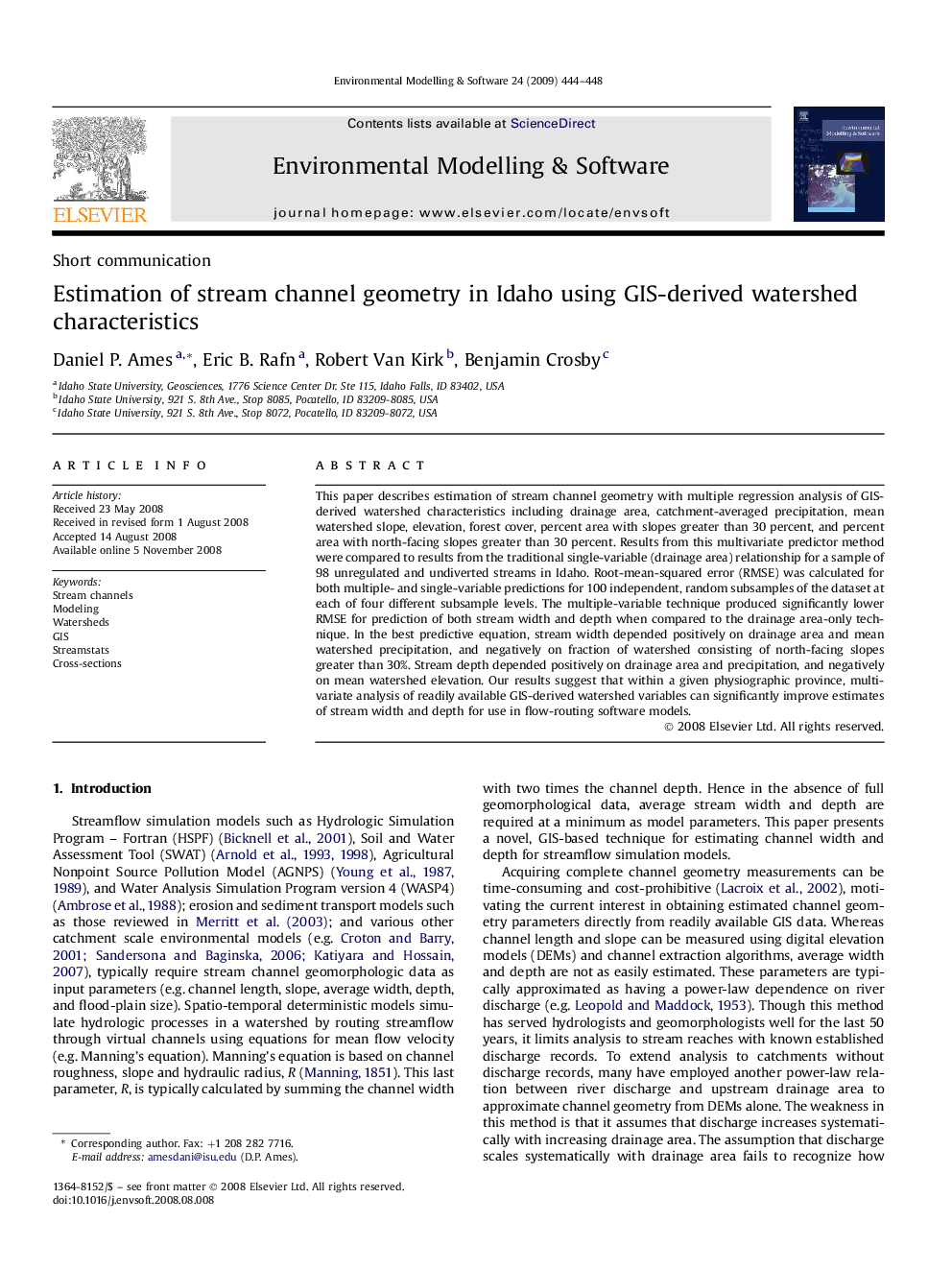| Article ID | Journal | Published Year | Pages | File Type |
|---|---|---|---|---|
| 569363 | Environmental Modelling & Software | 2009 | 5 Pages |
This paper describes estimation of stream channel geometry with multiple regression analysis of GIS-derived watershed characteristics including drainage area, catchment-averaged precipitation, mean watershed slope, elevation, forest cover, percent area with slopes greater than 30 percent, and percent area with north-facing slopes greater than 30 percent. Results from this multivariate predictor method were compared to results from the traditional single-variable (drainage area) relationship for a sample of 98 unregulated and undiverted streams in Idaho. Root-mean-squared error (RMSE) was calculated for both multiple- and single-variable predictions for 100 independent, random subsamples of the dataset at each of four different subsample levels. The multiple-variable technique produced significantly lower RMSE for prediction of both stream width and depth when compared to the drainage area-only technique. In the best predictive equation, stream width depended positively on drainage area and mean watershed precipitation, and negatively on fraction of watershed consisting of north-facing slopes greater than 30%. Stream depth depended positively on drainage area and precipitation, and negatively on mean watershed elevation. Our results suggest that within a given physiographic province, multivariate analysis of readily available GIS-derived watershed variables can significantly improve estimates of stream width and depth for use in flow-routing software models.
